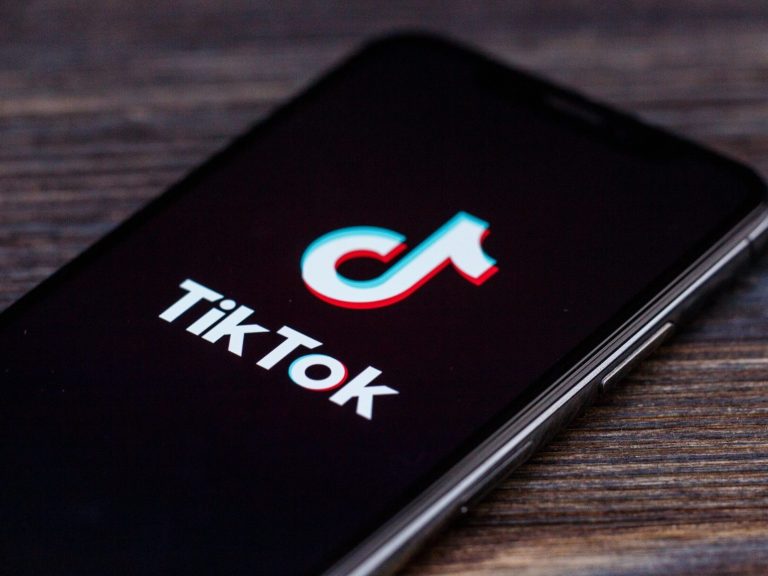We already have the first Polish biosimilars. “This is hope for patients around the world”

– Biosimilars are biological drugs. The difference in names is a market issue that allows us to understand which drug was available first. Therefore, it is commonly accepted that the original biological drug is simply called a biological drug, and subsequent biological drugs created on the basis of the same active substance, intended to treat the same condition, are called biosimilars – says Adriana Kiędzierska-Mencfeld, director of Polpharma Biologics in Warsaw-Duchnice.
Katarzyna Pinkosz, Wprost: We are still waiting for innovative new drugs designed by Polish scientists to be developed in Poland. Will Polpharma Biologics produce such drugs? Two biosimilar drugs developed by the company are already on the market.
Adriana Kiędzierska-Mencfeld: At Polpharma Biologics, we develop and manufacture biosimilars. However, we do not develop innovative drugs, i.e. original biological drugs. Perhaps this strategy will change in the future. However, biosimilars are our priority now. In this way, we want to increase the availability of biological therapies for patients. Another company from our ownership group, JJP Biologics, is responsible for the development of innovative biological drugs.
Both original drugs and generics or biosimilars are needed by patients. But first, let’s explain what a biological drug is, how it differs from a “chemical” one, and what is a biosimilar?
The most common type of drugs that are currently administered to patients are traditional, chemical drugs. Unlike biological drugs, they have a simpler chemical structure, predictable pharmacokinetic and pharmacodynamic properties. What’s more, they are stable, relatively inexpensive, and easily accessible. Biological drugs work with great precision. They are created in living cells that are grown in the laboratory. Similarly to gene or cell therapies, they are considered drugs of the future that will revolutionize medicine because they give hope for curing or stopping previously incurable diseases.
One type of biological medicine is monoclonal antibodies, which enable precise therapies for some chronic diseases. At Polpharma Biologics, we deal with biosimilars. They are also biological medicines. Biosimilars are biological medicines. The difference in names is a market issue that allows us to understand which medicine was available first. Therefore, it is commonly accepted that the original biological medicine is simply called a biological medicine, and subsequent biological medicines based on the same active substance intended to treat the same disease are called biosimilars.
So from the patient’s point of view, it is no less important to produce a biosimilar than to produce a biological drug, because more people simply have a chance to receive treatment?
We need both biosimilars and innovative drugs. Biosimilars are the hope for all of us that modern drugs will be more accessible. They are much cheaper and as effective as reference drugs (called innovative drugs). Patients often do not have access to therapy due to its high costs. Biosimilars lower this price barrier. We need innovative drugs, however, if only to increase the effectiveness of treatment, also for diseases that are currently incurable.
Okay, but where does the choice come from that we want to develop and produce this particular molecule and not another? How does the idea come about that this particular drug is worth producing?
The entire process of selecting a molecule is very complicated and involves a number of variables. One of them is what diseases or groups of diseases we want to cover with the selection, but also matching it to the technology we have developed. There are several ways to produce biological drugs. They can be produced in bacterial cells or mammalian cells, among other things. We use both options. Thanks to genetic engineering methods, these cells can be changed to produce large amounts of a specific product. In our case, these are monoclonal antibodies or their fragments. We can therefore use methods that are based on our technology, which we already have, or one that will only need to be slightly modified. I must also add that the development and production time of a biosimilar drug is 10-12 years. Therefore, the decision must be well thought out.
So the choice is very important?
Yes, some smaller companies may even disappear from the market after such a poor choice.
Many biological drugs are used in oncological diseases. The interest of companies in these molecules is much greater. Our interest so far has been directed at autoimmune diseases, which are also a major civilizational challenge. One such disease is multiple sclerosis.
Why does it take 10-12 years to develop a biosimilar drug, when – one could say – we already have a certain model (reference drug) that only needs to be reproduced?
When choosing a product, we know what molecule (the so-called active substance) creates the original drug (the so-called reference drug). In the next stages, we have to analyze what cells can produce this drug. The choice is not easy. We have to find those that produce large amounts of the active substance, as similar as possible to the original (the reference drug). We look at how the product specification changes on the market to determine the range of product variability. The choice of the cell line is key, and then the processes of selecting a specific cell, the so-called clone.
Next, we check the conditions in which the cell is grown. The choice of the cell medium, which provides the cells with the necessary nutrients, is also important. Colloquially, we can say that it is the “food” for the cells. It determines not only the growth of the cell, but also the mechanisms triggered in it. This is a complicated, long-term and important process. Then we have to determine the temperature, culture time, pH, oxygenation – many factors are important here.
Analytical methods (e.g. determination of concentration or activity) are being developed in parallel. There are over forty of them. They allow us to better characterize (describe and determine) the features of the molecule and make sure that it is actually biosimilar. The next process is its purification. We finish this process by having an active substance. Another very important stage is the development of the formulation, i.e. the solution in which the product is stable and can be administered to the patient. These can be, for example, filled syringes with needles, vials with the drug or powder for preparing the solution. Patenting the formulation is often carried out in parallel with patenting the molecule. This is the stage at which we can differ from the original drug – choose the formulation so that, for example, the biosimilar drug is more stable than the original.
In the case of biological drugs, we are not able to produce several batches of drugs in one day. This time is extended because we need more time for the cells to grow so that they are able to produce the right amount of the product. We can only accelerate the production of the drug to a certain point, then we have to wait for the cells to divide. The complexity of the production process and the time of this process also means that the costs of biosimilar drugs are higher than those of chemical drugs.
Are scientists working on all this?
Yes. You have to carefully design the gene, select the cell lines, modify them, select cells from the pool of those that produce the drug. It all sounds very simple, but in practice the time from developing a molecule to receiving approval for distribution from the most important international regulatory agencies is about 10-12 years. Scientists, engineers and a team of specialists work at each of these stages.
Why can’t a biosimilar drug perform better than the original drug?
If it were a drug with better effects, it would not be biosimilar. It would simply be a new drug. Our goal is to increase access to treatment for patients who need it the most. In the case of biosimilars, the clinical trial process is shorter because the effects of the drug are already well known. We can say that the original drug paves the way in this regard and there is no need to go through the second stage of clinical trials. Only the first and third are required. This significantly shortens the time and lowers the costs, and thus more patients have a chance for this drug.
We have established that the process of creating a biological drug is complicated. Hence, the price is higher than in the case of chemical drugs. The salvation in this area is biosimilar drugs. However, there is still some fear, especially among patients receiving original biological drugs, related to switching to biosimilar drugs. Is there a reason for such fears?
The regulations that determine whether a drug is approved for sale are extremely restrictive. The active molecule of a biosimilar drug must be described much more precisely and characterized much more than the molecule of the original drug. Before we even move on to clinical trials, we have to prove that our molecule is indeed similar to the original drug, and that the variability between batches is minimal.
Regulatory institutions are placing much higher demands on biosimilars, because much more is already known, for example, about the adverse effects of the original drug. I would even go so far as to say that biosimilars are much safer, because their variability is much lower.
So, to some extent, biosimilar drugs may be slightly better?
In terms of performance, no. But in terms of batch-to-batch variability, yes.
Two Polpharma Biologics molecules are already in production. Will there be more?
Last year, we obtained approval from the European Medicines Agency (EMA) and the US Food and Drug Administration (FDA) to distribute our first biosimilar drug developed and manufactured from scratch in laboratories in Poland – at Polpharma Biologics. This is a biosimilar natalizumab used in the treatment of multiple sclerosis. In turn, two years ago, the same institutions issued approval to distribute a biosimilar ranibizumab used in the treatment of the wet form of age-related macular degeneration.
We are working intensively on the next biosimilar drugs. They are at various stages of development. The most advanced work is underway on biosimilar vedolizumab, which is used in the treatment of non-specific inflammatory bowel diseases, e.g. in Crohn’s disease. It has already passed the first phase of clinical trials.
These achievements would not be possible without the excellent team we create at Polpharma Biologics. This is thanks to Polish and foreign scientists. Together we gather knowledge and develop the domestic biotechnology sector. Today we can boast of a great team, qualified staff of scientists and achievements on the global market. We built everything from scratch.
Adriana Kiędzierska-Mencfeld is the director of Polpharma Biologics in Warsaw-Duchnice, a member of the management board of Polpharma Biologics SA






